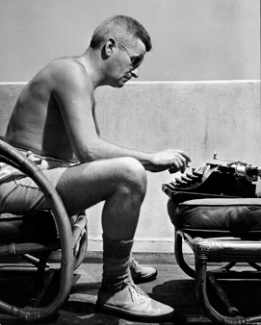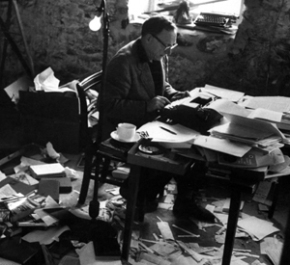
Learning to ride
by Rose Mary Boehm
It was my mum’s.
Had been her mum’s.
I didn’t reach the saddle yet. It was black,
huge, heavy, cumbersome and solid.
When nobody was around
to prevent access,
I took to it
with severe stubbornness.
That was in 1947, and my wobbly
efforts were avidly observed
(or so I thought)
from the turrets
of patrolling Russian tanks.
We were used to them by then,
and found that, after all,
they had kids too.
Back in Moscow, Kaliningrad,
Novgorod, Glazov, Perm, or Novosibirsk.
Mum used honey on the wounds
and had no place to lock up
the bike.
No fractures.
I soon learned that increased
speed would keep me
on the straight and narrow.
I soon learned that the same recipe
was not useful for life.
AUTHOR’S PHOTO CAPTION: The one with the rusty bell could have been mine.
NOTE FROM THE AUTHOR: After the end of WWII we tried to get back to some “normality.” There was nothing new to be had, we invented our own games, and Mum’s bike was almost part of the family. Mum had used it to get us food, to deliver her sewing, to take us to the doctor… Russian tanks and military vehicles still patrolled the roads in our part of the already divided Germany. I made the best of it all.

ABOUT THE AUTHOR: A German-born U.K. national, Rose Mary Boehm lives and works in Lima, Peru. Author of two novels and a full-length poetry collection (TANGENTS) published in 2011 in the U.K., her work has been widely published in U.S. poetry reviews as well as some print anthologies. One of her poems was chosen for Diane Lockward’s The Crafty Poet. She won third prize in the 2009 Margaret Reid Poetry Contest for Traditional Verse’ (US), was semi-finalist in the Naugatuck Poetry Contest 2012/13, and has been a finalist in several Goodreads poetry contests, winning it twice: in October 2014 and January 2016; a new poetry collection is earmarked for U.S. publication in May 2016.












